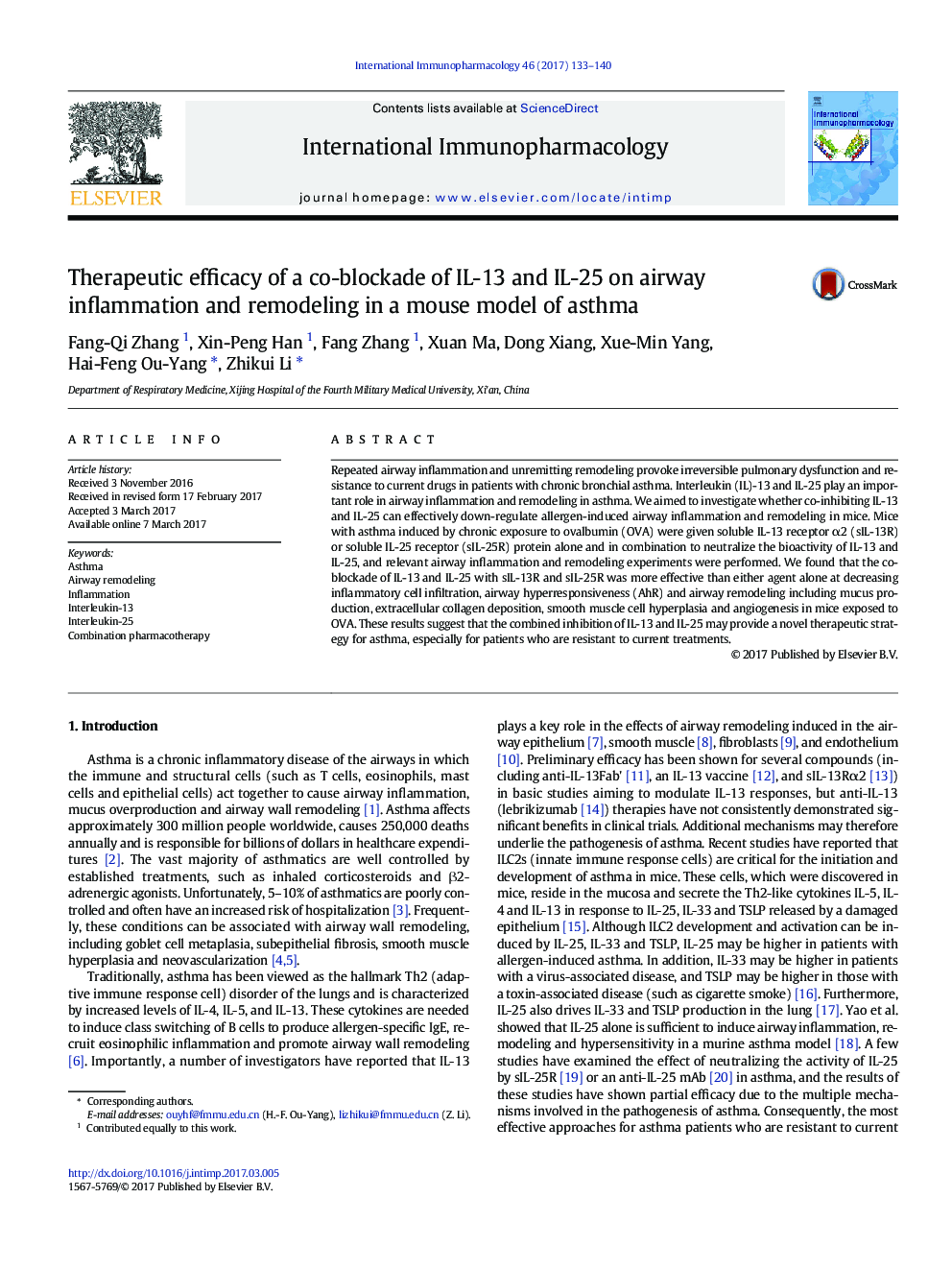| Article ID | Journal | Published Year | Pages | File Type |
|---|---|---|---|---|
| 5555572 | International Immunopharmacology | 2017 | 8 Pages |
â¢The co-blockade of IL-13 and IL-25 attenuates airway inflammation and airway hyperresponsiveness (AhR).â¢The co-blockade of IL-13 and IL-25 alleviates mucus secretion in airway.â¢The co-blockade of IL-13 and IL-25 reduces extracellular collagen deposition in lung.â¢The co-blockade of IL-13 and IL-25 ameliorates hypertrophy and hyperplasia of smooth muscle cells and angiogenesis in airway.
Repeated airway inflammation and unremitting remodeling provoke irreversible pulmonary dysfunction and resistance to current drugs in patients with chronic bronchial asthma. Interleukin (IL)-13 and IL-25 play an important role in airway inflammation and remodeling in asthma. We aimed to investigate whether co-inhibiting IL-13 and IL-25 can effectively down-regulate allergen-induced airway inflammation and remodeling in mice. Mice with asthma induced by chronic exposure to ovalbumin (OVA) were given soluble IL-13 receptor α2 (sIL-13R) or soluble IL-25 receptor (sIL-25R) protein alone and in combination to neutralize the bioactivity of IL-13 and IL-25, and relevant airway inflammation and remodeling experiments were performed. We found that the co-blockade of IL-13 and IL-25 with sIL-13R and sIL-25R was more effective than either agent alone at decreasing inflammatory cell infiltration, airway hyperresponsiveness (AhR) and airway remodeling including mucus production, extracellular collagen deposition, smooth muscle cell hyperplasia and angiogenesis in mice exposed to OVA. These results suggest that the combined inhibition of IL-13 and IL-25 may provide a novel therapeutic strategy for asthma, especially for patients who are resistant to current treatments.
